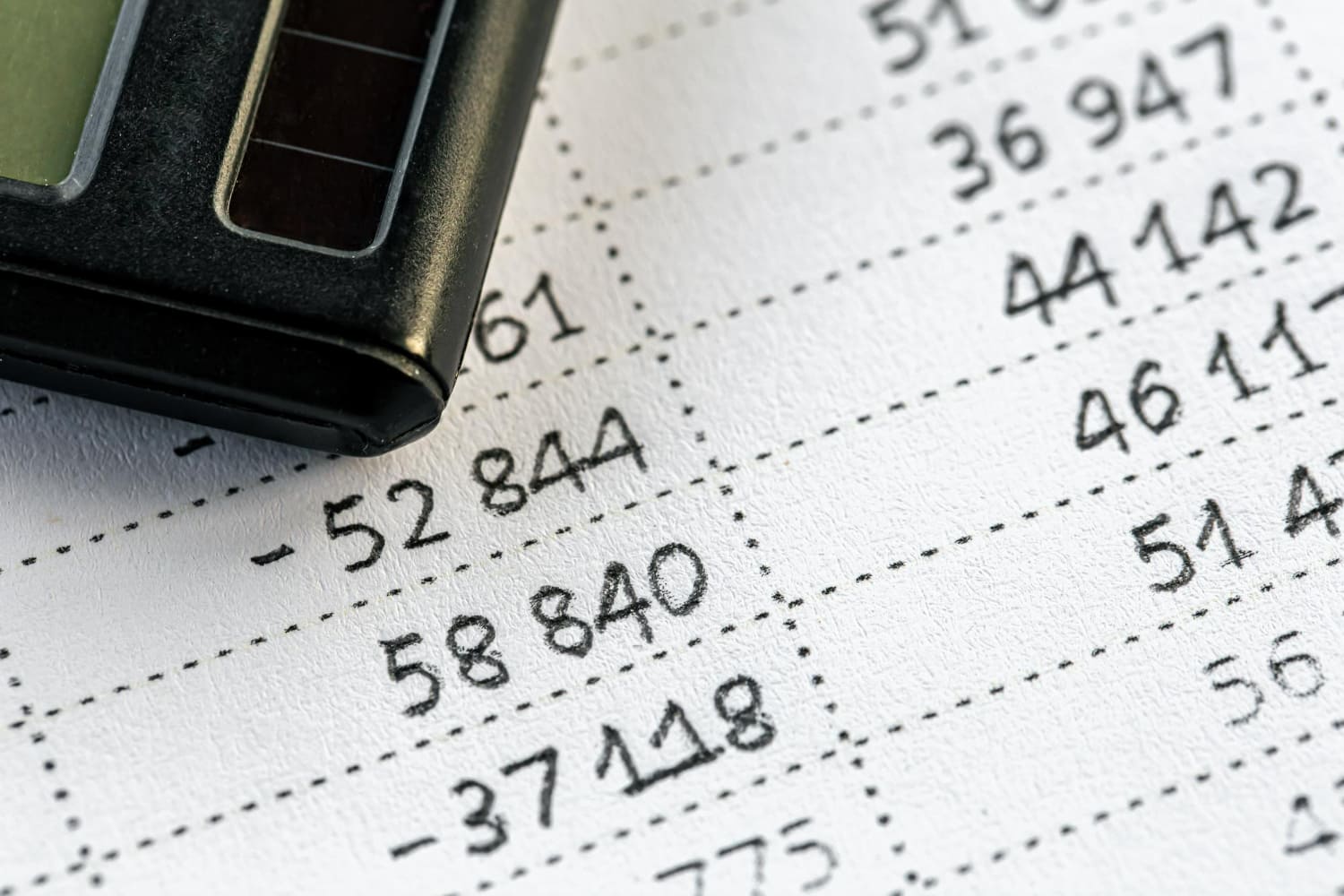Understanding a Mortgage Loan Estimate
A mortgage loan estimate is a document that provides you with important information about a mortgage loan you are considering. It is typically provided by a mortgage lender and is required by law under the Truth in Lending Act.
Here are some key components of a mortgage loan estimate:
- Loan terms: This section outlines the basic terms of the loan, including the loan amount, interest rate, and length of the loan.
- Projected payments: This section provides an estimate of what your monthly payments will be, including the principal, interest, taxes, and insurance.
- Closing costs: This section outlines the estimated closing costs associated with the loan, such as origination fees, appraisal fees, and title insurance.
- Other costs: This section includes any other costs associated with the loan, such as prepayment penalties or mortgage insurance.
- Comparisons: This section provides you with information on how the loan you are considering compares to other loans, including the total cost of the loan and the annual percentage rate (APR).
- Other considerations: This section may include other important information about the loan, such as whether the interest rate is fixed or adjustable, and whether there are any balloon payments or other unusual features.
- Estimated Cash to Close: Final calculation adding all the closing costs and pre-paid expenses together, along with down payment and any credits provides an estimated amount required for the mortgage loan closing. See a more detailed breakdown of the Cash to Close section below.
Closing costs vs Pre-paid Expenses
Closing costs and pre-paid expenses are both fees associated with getting a mortgage loan, but they are slightly different.
Closing costs are the fees associated with completing the mortgage transaction and are typically paid at the time of closing. These fees may include things like appraisal fees, title insurance, origination fees, and other costs related to processing the loan. Closing costs can vary depending on the lender and the location of the property.
Pre-paid expenses, on the other hand, are property and loan related costs that are paid in advance. These expenses may include items like property taxes, homeowner’s insurance, and mortgage loan interest that accrues between the closing date and the end of the month. These costs are typically paid in advance so that the lender can ensure that these expenses are covered when they come due.
What are different types of costs on the loan estimate?
There are several types of costs that may be included on a mortgage loan estimate. Here are some of the most common ones:
- Origination fees: This is a fee charged by the lender for processing the loan application and creating the loan. It is typically a percentage of the loan amount, and it can vary from lender to lender.
- Appraisal fees: This is the cost of having a professional appraiser assess the value of the property you are buying or refinancing. The lender will typically require an appraisal to ensure that the property is a worthy collateral for the mortgage loan.
- Title insurance: This is insurance that protects the lender (and sometimes the borrower) against any defects in the property’s title. The cost of title insurance can vary depending on the location and value of the property.
- Escrow fees: These are funds collected by the lender to pay for the future property taxes, homeowners’ insurance, and other possible expenses related to the property.
- Prepaid interest: This is the interest that accrues on the loan from the date it funds until the end of the month. The amount of prepaid interest depends on the loan amount, interest rate, and closing date.
- Mortgage insurance: If you are putting less than 20% down on a home, you may be required to pay for mortgage insurance to protect the lender in case you default on the loan.
- Other costs: There may be other costs associated with the loan, such as discount points (which allow you to lower your interest rate by paying upfront), appraisal review fees, credit report, flood certification, underwriting, processing, or application fees.
What is the escrow account?
An escrow account is a separate bank account that is set up by the lender to hold funds that are used to pay for certain expenses related to the property. The purpose of an escrow account is to ensure that these expenses are paid in a timely manner and that there are sufficient funds available to cover them.
Typically, the lender will require the borrower to make monthly payments into the escrow account. These payments will include funds to cover property taxes, homeowner’s insurance, and possibly other expenses.
When these expenses come due, the lender will use the funds in the escrow account to pay for them. This ensures that the borrower does not have to worry about remembering to make these payments on their own, and it helps the lender to manage the risk associated with the loan.
Escrow accounts are typically required for certain types of mortgage loans, such as FHA loans, and may be optional for others. The exact requirements for escrow accounts can vary depending on the lender and the type of loan.
How often is the Loan Estimate updated?
Once you receive a Loan Estimate from a lender, they are required by law to keep the terms of that Loan Estimate available for at least ten business days. During this time, the lender cannot change the terms of the loan, and you have the opportunity to review the Loan Estimate and ask any questions you may have.
After the ten business days have passed, the lender may make changes to the terms of the loan if necessary, but they must provide you with a revised Loan Estimate if the changes result in an increase in certain costs, such as the interest rate, loan origination fees, or closing costs. If the changes are not significant enough to require a new Loan Estimate, the lender may provide you with a revised Closing Disclosure instead.
In general, the Loan Estimate may be updated multiple times during the loan process, particularly if there are changes to the loan terms or if there are delays in the process that affect the timing of the loan closing.
Loan Estimate vs Closing Disclosure
Both the Loan Estimate and Closing Disclosure are important documents that provide borrowers with information about the costs associated with a mortgage loan. However, they serve different purposes and are provided at different times during the loan process.
The Loan Estimate is typically provided by the lender within three business days of receiving a loan application. It outlines the basic terms of the loan, including the loan amount, interest rate, and estimated closing costs. The Loan Estimate is designed to help borrowers compare loan offers from different lenders and make an informed decision about which loan to choose.
The Closing Disclosure, on the other hand, is provided by the lender at least three business days before the loan closing. It provides detailed information about the final terms of the loan, including the final interest rate, loan amount, and closing costs. The Closing Disclosure is designed to ensure that borrowers understand the terms of the loan and are not surprised by any unexpected costs at the time of closing.
One key difference between the Loan Estimate and the Closing Disclosure is that the Loan Estimate is an estimate of the costs associated with the loan, while the Closing Disclosure provides final costs. The Closing Disclosure also includes a detailed breakdown of how the costs are allocated between the borrower and the seller, if applicable.
The Cash to Close Section
The Cash to Close section provides an estimate of the total amount of money you will need to bring to the closing table and is broken down into several sections:
Closing Costs: This includes all of the fees and costs associated with closing the loan, such as appraisal fees, title insurance, and loan origination fees. Any lender credits will also be included here.
Down Payment: If you are required to make a down payment on the loan, this amount will be listed in this section. The down payment is typically a percentage of the purchase price of the property and can range from 0% to 20% or more, depending on the type of loan and other factors.
Deposit: If you made an Earnest Money Deposit on the contract, it will be listed here.
Seller credits: Any credit that the seller is providing you with toward closing costs or repairs will be shown in this section.
Adjustments: This includes any prorated amounts that need to be paid at closing, such as property taxes or homeowners association fees. These amounts are typically divided between the buyer and seller based on the closing date.
Estimated Cash to Close amount can typically be paid with a cashier’s check or a wire transfer. Review the Cash to Close section carefully and make sure you have enough funds to cover these costs at the time of closing.
Bottom Line
The Loan estimate (and the subsequent Closing Disclosure) is probably the most important loan document to review, because it’s the summary of your loan amount, interest rate, costs, and cash to close. Carefully go through your mortgage loan estimate and ask any questions you may have before agreeing to a loan. Make sure you understand all the terms and costs associated with the loan, and be aware of any potential risks or drawbacks. Comparing the Loan Estimate and the Closing Disclosure can help borrowers ensure that they are getting the loan they were promised and that there are no unexpected changes to the loan terms or costs at the time of closing.
Please reach out to me with any questions regarding your Loan Estimate or Closing Disclosure at 312-296-4175 or email me at connect@borislending.com. I lend in all 50 states and I am never too busy for your referrals!!
I have been in the mortgage industry since 1997 and I understand the anxiety that comes with making the most expensive investment of a lifetime. My objective is to be your advisor, to educate you and to make the mortgage loan transaction as transparent and as stress-free as possible. I enjoy establishing personal connections and work mostly by referral. I thoroughly explain the process and available options, and guide my clients to make choices that best fit their needs and financial goals. Once the underwriting begins I communicate regularly and keep my clients apprised of the loan status from the beginning through the end. My relationship with clients does not end at the closing table. You are my client for life and I am always available to answer your questions and provide you with guidance.




